
How To Treat And Avoid Yellow Cannabis Leaves
There's no doubt that the appearance of yellowing leaves on your prized cannabis plant can be alarming. But did you know that it's usually down to a few common problems that are extremely easy to treat? All that's needed is a keen eye and fast action to ensure that your plant won't become damaged. Here is out guide to solving these issues.
We all want the best for our cannabis plants, and the sight of luscious green leaves is a sure-fire indication that your cultivar is flourishing. However, if your leaves are showing signs of yellowing, this could be a cause for concern. Although there are many different reasons as to why this occurs (we’ll get to them shortly), thankfully, it’s not the death sentence for plants many fear. With a bit of ingenuity, patience and awareness, you can step in and get your plants back on track in no time at all. Sound good? Well, let’s get into it.
Determining the problem
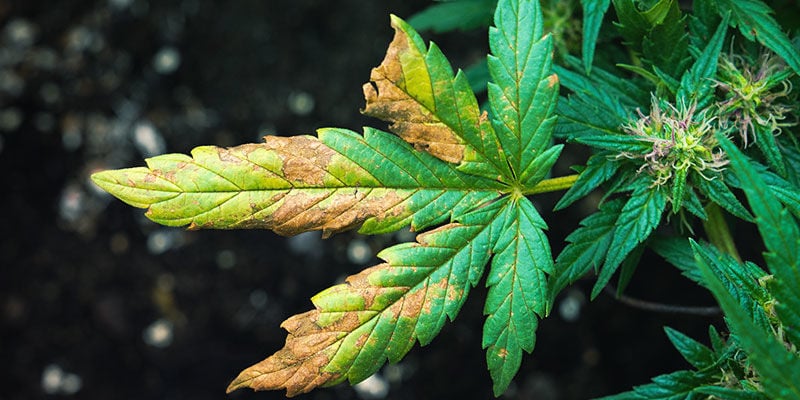
A multitude of problems can cause the yellowing of the leaves, so arguably, the first and most crucial task is correctly identifying the issue. The yellowing itself is known as chlorosis. This basically means the loss of chlorophyll that results in the discolouration of the leaves.
Now, if you’re a seasoned cannabis cultivation expert, you might already know various plant problems. However, this could take a little longer to determine if you’re a novice. But be patient and take your time when checking out your plants. Although worrying, your plant will have some telltale signals that you’ll need to pay attention to for diagnosis. Determining the problem as soon as possible will give you more options and time to fix it.
When you shouldn’t worry about yellow cannabis leaves
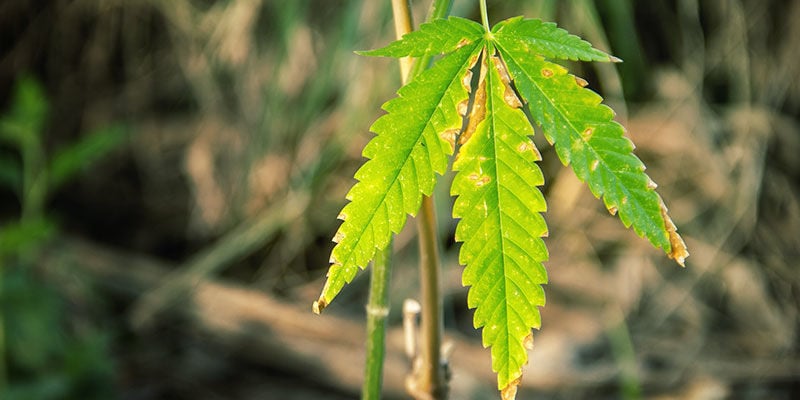
Of course, it might be tempting to just remove the leaves as soon as you see them, but this can have a negative impact on your plant. The leaves essentially act like biological solar panels and fuel the health and growth of your plant, especially for young plants. So cutting them off is not recommended. However, towards the end of their flowering cycle, plants have the tendency to naturally yellow and wilt their leaves. This process, called senescence, is entirely natural to the plant’s lifecycle. So don’t be alarmed if your plant is in its late stages of growth and showing some natural signs of yellowing.
The most common causes of yellow cannabis leaves
As mentioned, the discovery of yellowed cannabis leaves can be a worrying one but rest assured, there are many ways to diagnose, treat and even avoid any plant ailments. The following are the most common causes of yellow cannabis leaves and everything you can do in your power to help your plants.
pH imbalance
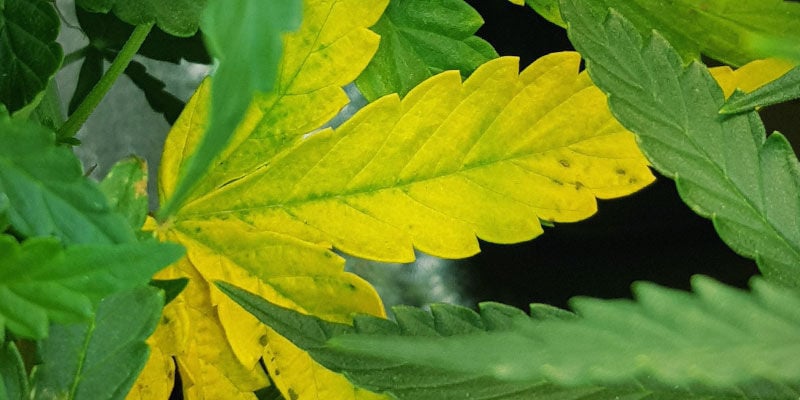
Getting the right pH level for your plants is paramount and can make or break a home growing project. This can be as simple as getting the wrong kind of soil, resulting in huge problems. However, an ailment known as “nutrient lockout” can also occur if the pH level is off. This is a chemical reaction that happens when the plant is unable to absorb any nutrients from the soil and can irrevocably damage the plant if action is not swiftly taken.
How to recognise pH imbalance
The yellowing of the leaves is a sure-fire way to see that there is a pH imbalance. However, a little more investigation will be needed to be sure. Not only does discolouration occur, but you can also see patches on the surface and burning on the edges of the leaves.
How to treat pH imbalance
Firstly, check the pH level of the substrate. This can be achieved by using a pH tester that sticks into the growing medium and will give you a readout of the current level.
As a rule of thumb, pH levels between 6.0 and 7.0 for soil, and between 5.5 and 6.5 for hydro/coco coir, provide the most efficient environment for your plants to flourish. It is ok for your pH to drift within these ranges. Different nutrients are absorbed better at different pH levels, so movement can be good if it stays in these boundries.
If your pH level is off, the simplest way to fix it is to obtain a bottle of pH up or pH down. This can be added to the water that you give to your plant. Check the pH of the water before you give it to your plant, then water through your substrate/hydro system. You can then test the pH of the runoff from your watering. It is a good idea to regularly check the pH of your water and the runoff.
How to prevent pH imbalance
Much like the treatment of pH imbalance, prevention lies in giving your plants the best possible setting from the get-go. Be sure to check the health of the leaves and test your growing medium regularly, and you’ll easily avoid any pH imbalance or nutrient lockout.
Temperature issues
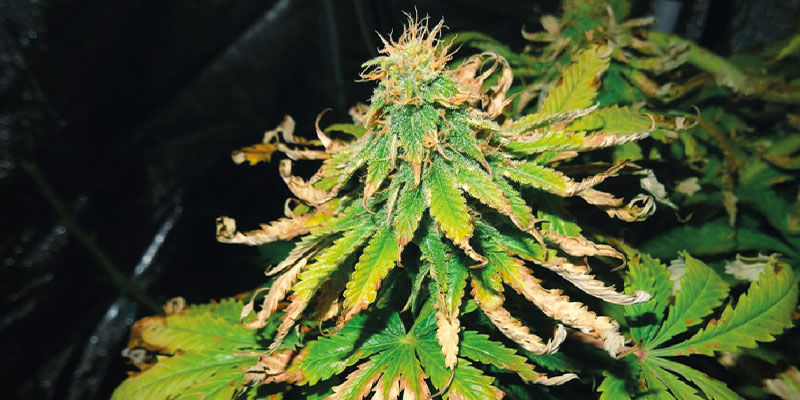
Providing your plant with a climate that’s too hot or too cold will cause issues. This can occur in both indoor and outdoor settings and can range from keeping a plant in direct sunlight for too long to placing it in a cold environment. Thankfully, it’s incredibly straightforward to avoid or treat.
How to recognise temperature issues
The ideal temperature for cannabis can depend on the strain you are growing and the humidity of your environment. However, generally speaking, 20–28 °C is considered the ideal temperature range to grow cannabis. Inconsistent or excessive temperatures will result in discoloured and curled leaves. A plant with too much heat will quickly dry out, leaving both the soil dry and leaves wilting. The same goes for constant low temperatures also. If you notice these symptoms on your plants, it’s best to jump in as quickly as possible to remedy it.
How to treat temperature issues
For outdoor growing projects, be wary of how much direct sunlight your plants are getting. If you’re living in more Mediterranean climates, plants can be more susceptible to overexposure to heat. Be sure to keep them watered, and if appropriate, place them in the shade when needed.
The same goes for indoor plants. Using grow lights can provide some serious heat and cause issues for your plants. You need to ensure good ventilation to displace hot air with cooler air in this situation.
Conversely, if you think your plant is too cold, place them in a warmer location. If you have pots on the ground, consider moving them—especially if they are sat on stone, concrete or tiled floors.
How to prevent temperature issues
Be mindful of your grow op. As mentioned, place your plants in areas that will give them plenty of air circulation and won’t be subject to excessive cold and warm temperatures. This is in itself is often enough to thwart any temperature issues.
Light burn/bleaching
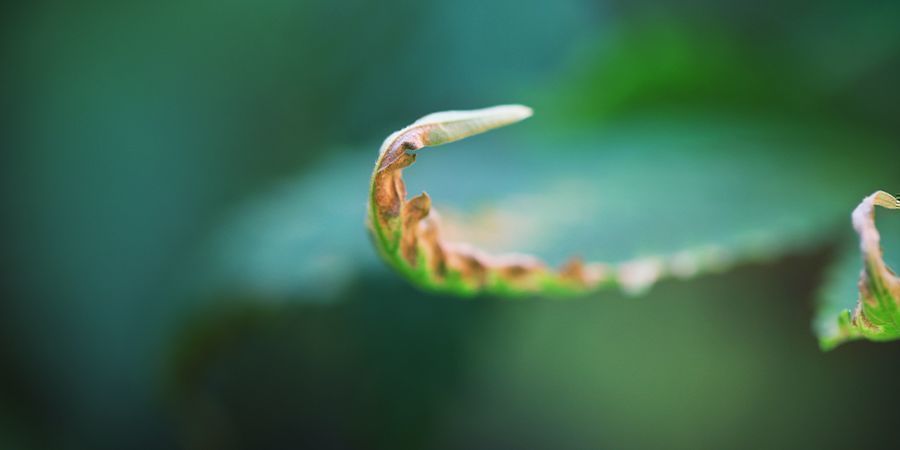
Following on from temperature issues is light burn. This is an ailment that afflicts indoor plants and can normally be put down to poor light placement, resulting in too much light and some physical symptoms for your plants.
How to recognise light burns
Yellow leaves will begin to appear on a plant suffering from light burn. Typically the yellowing will start on the parts of the plant nearest the light source. This is a great visual indication and will allow you to determine the light burn quicker. Other symptoms include yellowed leaves that can’t be removed easily.
How to treat light burns
Light burn is caused by the grow lights being placed too close to the plants. The best course of action is to place them further away to prevent any damage. You can easily check the instructions or manufacturer’s guide to the lights, and they will confirm the optimum distance your lights should be from your plants.
How to prevent light burns
Similar to that of treating light burn, preventing this ailment is just as easy. Whether you’re an experienced home grower or somewhat of a novice, take your time to create the best possible environment for your plants and ensure that your lights are at a safe distance to ensure no damage will be caused.
Under/overwatering
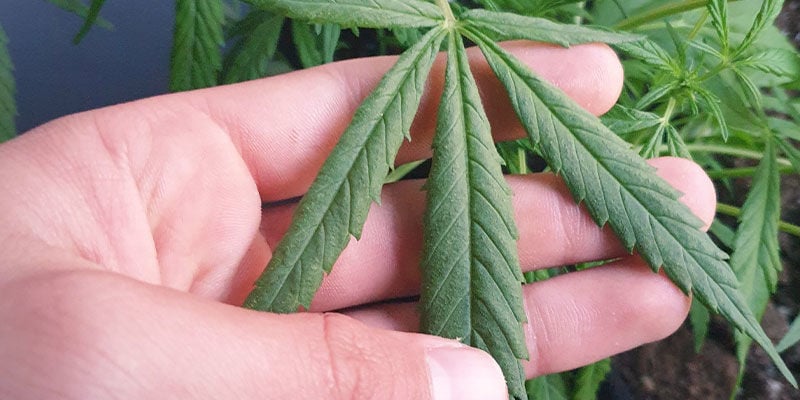
Too much or too little water can be responsible for a wide range of symptoms for your plants. It’s certainly no secret that cannabis thrives with an efficient wet-dry cycle. With this in mind, you should be wary of your watering schedule to forego any potential problems with your plants.
How to recognise under/overwatering
Both under and overwatered cannabis plants look very similar. For plants that might be underwatered, leaves will be yellowing and wilt from a lack of water content in their leaves. They will feel almost weak to the touch. Be sure to also check the soil of the plant and the underneath of the container. If it’s bone dry, your plant will undoubtedly need a drink.
The situation is similar for overwatering. A plant with too much water will have drooping leaves that are curling downwards, but may feel firm to the touch. This is because they have so much water in them that it’s forcing their structure to bend. The soil may also be damp or your pot may be sitting in a pool of water.
How to treat under/overwatering
If you notice your plant is wilting and yellowed, be sure to water it accordingly as it’s likely underwatered. It should recover reasonably quickly.
If your plant is overwatered, lay off the water for a little while until the cannabis plant has had time to absorb it and the growing medium time to dry out.
How to prevent under/overwatering
When it comes to prevention, ensure you carry out regular maintenance on your plants, including watering. A simple touch of the soil, burying a finger to your first knuckle, will usually tell you if it’s dry enough and needs water. It is as easy as that.
An extra note: it’s much easier for cannabis to recover from underwatering than it is from overwatering, so if in doubt, be cautious.
Root rot
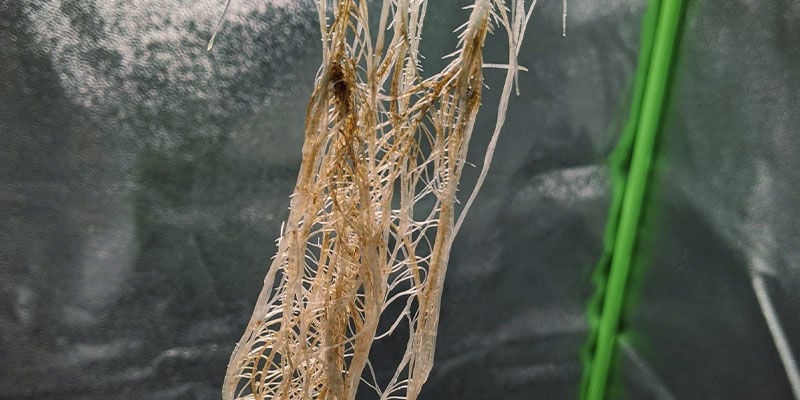
Too much moisture as a result of overwatering can lead to much more severe issues like root rot. This is a microbial condition that attacks the roots of the plants and will cause them to rot if left untreated.
How to recognise root rot
Alongside the yellowing of the leaves, root rot will also cause the roots of your plant to become slimy and brown. You can check the health of your roots by gently removing the plant from its container and checking them. If the plant has begun to rot, the roots will also carry an unpleasant smell.
How to treat root rot
Fortunately, it’s pretty easy to treat root rot as long as it’s caught early. Firstly, curb your watering as it’s likely to be the culprit and cause of the root rot. Giving your plant time to dry out will allow it to recover slightly, but what do you do about those wayward roots? You can introduce some beneficial microbes to the soil, such as mycorrhizal fungi, that will combat the infection and hopefully restore your plant.
How to prevent root rot
Maintaining a scheduled watering routine will stop root rot before it’s had time to set in. For extra help, you can also look to use fabric pots as a means for extra aeration and drainage. This helps ensure your plant’s roots aren’t sat in waterlogged soil.
Pest invasion
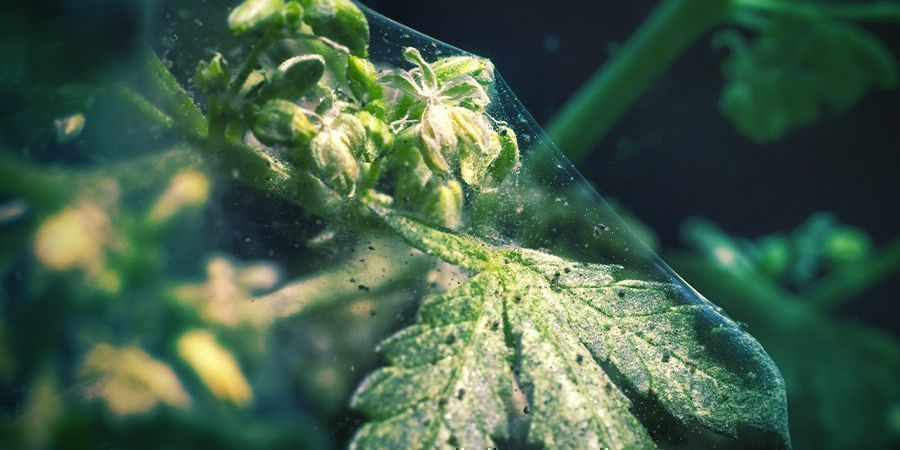
Easily a grower’s worst nightmare, an invasion of pesky pests used to be the beginning of the end for a cannabis plant. However, with quick action and a keen eye, it’s completely possible to treat pests quickly and efficiently.
How to recognise a pest invasion
Pests come in all shapes and sizes, but they are typically drawn to the leaves of the plant and will congregate there, feeding off the surrounding plant material. A simple glance on top and under the leaves will tell you everything you need to know. If you notice pests there, it’s time to act quickly. Some giveaway signs are the yellowing and shrivelling of the leaves, depending on how deep-set the pest invasion is.
How to treat a pest invasion
You can look to purchase a pesticide or look to produce your own one from home using household items such as neem oil. A quick spray on the leaves will make short work of those pests and restore order to your grow op. Of course, you can always look to introduce other predator insects such as ladybugs to fight off any pest invasion too. Such insects won’t harm your plants, but act as their feeding grounds, encouraging them to stay, patrol and protect your cannabis.
A very important point is that if you intend to go down the pesticide route, not to use any on any part of the plant you will consume—so not on flowers!
How to prevent a pest invasion
A few simple steps are all it takes to prevent a pest invasion. Firstly be careful with the placement of your plants as keeping them too close to others can be hugely attractive to any prospective pests. As part of your maintenance, you can look to spray a little neem oil-based pesticide on the leaves to deter any invasion; your plant will thank you.
Leaf Septoria
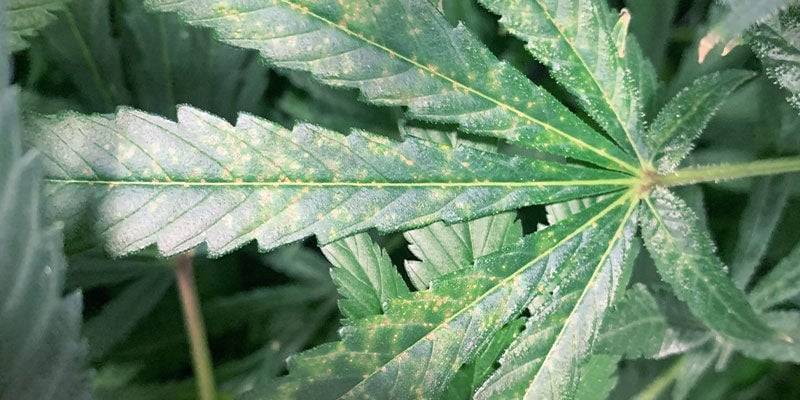
Leaf septoria is a fungal infection that can strike your plants at almost any time during its life cycle. This debilitating disease for cannabis plants can significantly impact their performance.
How to recognise leaf septoria
As an easy sign to spot, leaves infected with leaf septoria will initially begin to show dark spots before turning yellow and wilting. If left untreated, leaf septoria can wreak havoc throughout your plant, stunt growth and greatly reduce harvests, if not outright kill it.
How to treat leaf septoria
It’s essential to cut away any infected foliage to protect the remaining leaves. Use pruning scissors to remove infected leaves but be sure to clean them after each use to prevent further contamination. Once sufficient leaves have been cleared, spray the plant with a neem oil foliar spray to make short work of any remaining traces of the infection.
How to prevent leaf septoria
Prevention of leaf septoria is quite a simple process. Keep your plants in an environment that has plenty of air circulation. You can always look to use a dehumidifier if you’re cultivating in an indoor setting that is damp.
Over/Under Fertilization
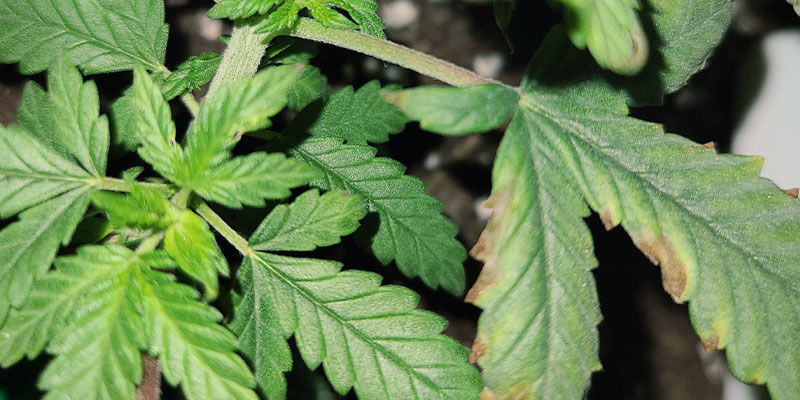
The key nutrients for cannabis are nitrogen, phosphorus and potassium. They are absolutely vital for the plant’s growth, performance, and overall health. They are usually found in liquid and granular fertilizers for plants. However, too much or too little fertilizer can be detrimental to any growing project.
How to recognise over/under fertilization
Overfertilization will result in curled, yellowed and crunchy leaves that are the by-product of nutrient burn caused by too much fertilizer. Under fertilized plants will showcase dried out, yellowed and wilted leaves, which means they haven’t had enough nutrients.
How to treat over/under fertilization
The use of fertilizers is a fine science, and exact amounts are needed for your plants to perform at their best. For the most part, store-bought cannabis fertilizers will come with instructions for use and detail how much you should use, which will easily remedy any overfertilization issues. However, suppose you’re dealing with any deficiencies. In that case, we suggest reading our guide on nutrient deficiencies so you can really make the most of your plants.
How to prevent over/under fertilization
Taking your time and ensuring that your plants require more nutrients is key for using fertilizers. Using them too soon or too late in the plant’s growing cycle will only cause more harm than good. So be sure they’re ready, and you simply can’t go wrong.
Make yellow leaves a thing from the past
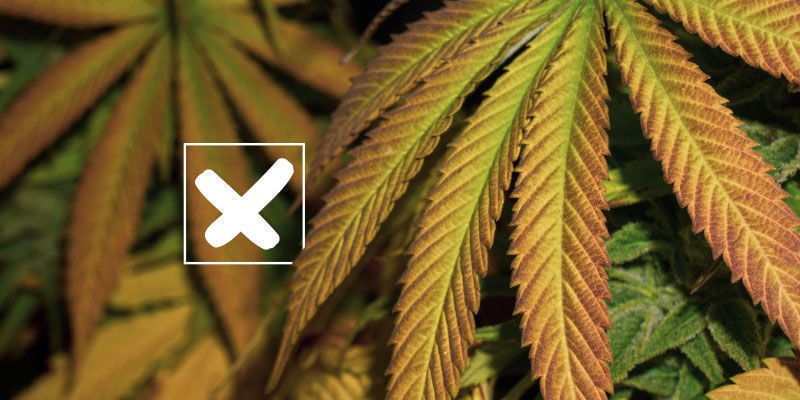
Those are the most common afflictions that can cause your plants’ leaves to yellow and wilt. As you can see, while it’s an inconvenience, it doesn’t spell the end for your home growing project. Just be sure to keep an eye on your plants throughout the entirety of their growing cycle from seed to harvest, and you’ll notice any changes they go through, whether minor or major. It’s certainly a great way to increase your knowledge and skills as a grower. So as soon as you conquer any yellowing leaves, you’ll be ready for your next project.
-
 7 min
June 4, 2021
5 Problems That Can Occur During Cannabis Flowering
Getting the very best out of your bud requires care and attention. But then, why else would you be growing? From ensuring adequate nutrient levels and lighting conditions to the best ways to cover...
7 min
June 4, 2021
5 Problems That Can Occur During Cannabis Flowering
Getting the very best out of your bud requires care and attention. But then, why else would you be growing? From ensuring adequate nutrient levels and lighting conditions to the best ways to cover...
-
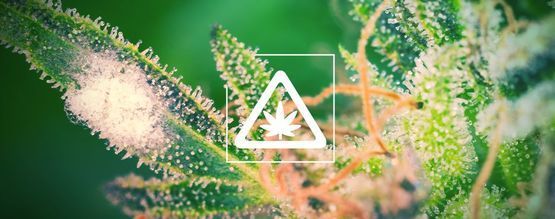 10 min
June 10, 2019
Common Problems In The Cannabis Garden
There's nothing quite like cultivating cannabis from the comfort of your home or garden. Unfortunately, it does come with some pitfalls. Granted, these are more than likely minor, but there are...
10 min
June 10, 2019
Common Problems In The Cannabis Garden
There's nothing quite like cultivating cannabis from the comfort of your home or garden. Unfortunately, it does come with some pitfalls. Granted, these are more than likely minor, but there are...











 United States
United States








